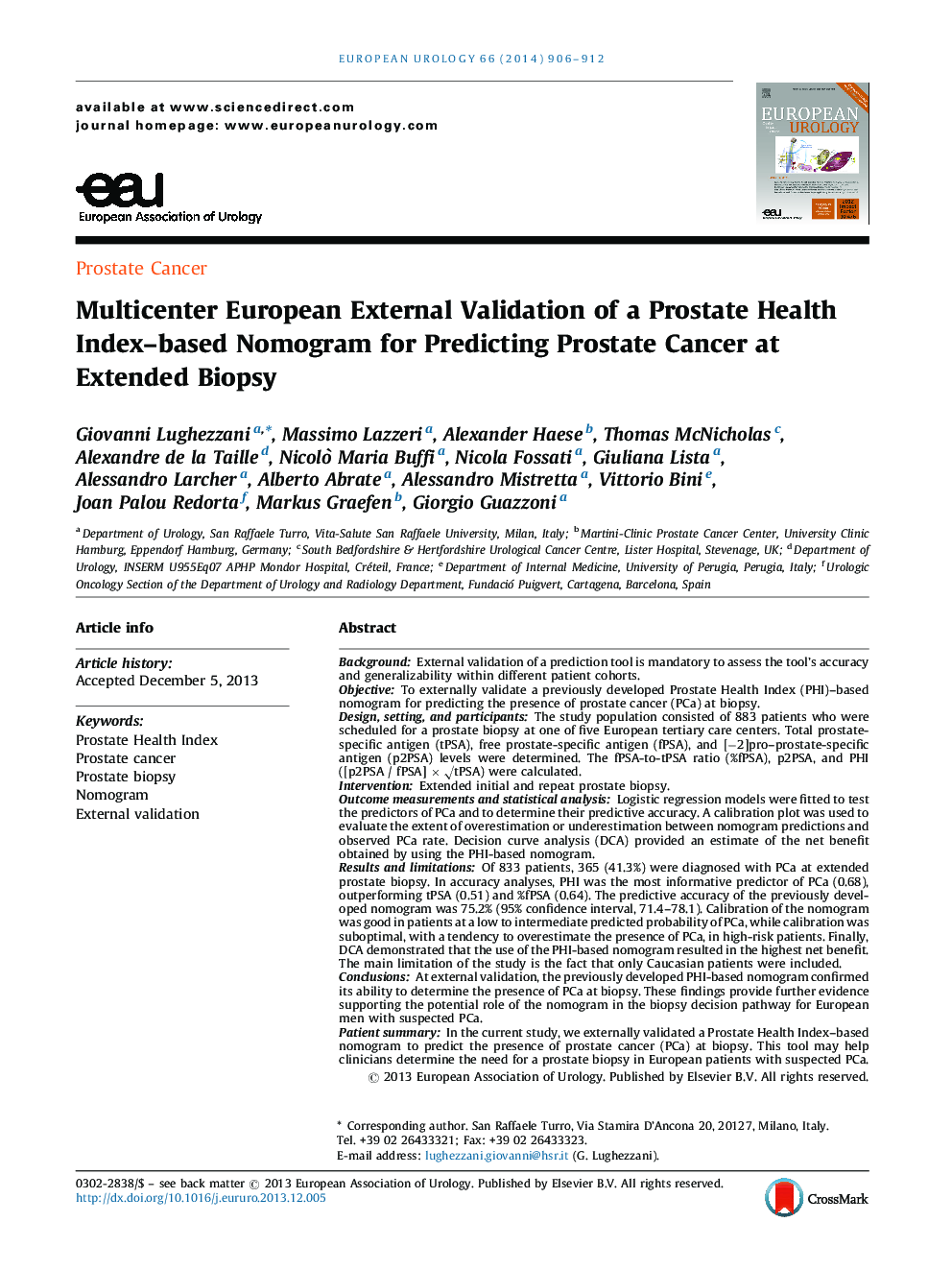| کد مقاله | کد نشریه | سال انتشار | مقاله انگلیسی | نسخه تمام متن |
|---|---|---|---|---|
| 6175405 | 1252964 | 2014 | 7 صفحه PDF | دانلود رایگان |

BackgroundExternal validation of a prediction tool is mandatory to assess the tool's accuracy and generalizability within different patient cohorts.ObjectiveTo externally validate a previously developed Prostate Health Index (PHI)-based nomogram for predicting the presence of prostate cancer (PCa) at biopsy.Design, setting, and participantsThe study population consisted of 883 patients who were scheduled for a prostate biopsy at one of five European tertiary care centers. Total prostate-specific antigen (tPSA), free prostate-specific antigen (fPSA), and [â2]pro-prostate-specific antigen (p2PSA) levels were determined. The fPSA-to-tPSA ratio (%fPSA), p2PSA, and PHI ([p2PSA / fPSA] Ã âtPSA) were calculated.InterventionExtended initial and repeat prostate biopsy.Outcome measurements and statistical analysisLogistic regression models were fitted to test the predictors of PCa and to determine their predictive accuracy. A calibration plot was used to evaluate the extent of overestimation or underestimation between nomogram predictions and observed PCa rate. Decision curve analysis (DCA) provided an estimate of the net benefit obtained by using the PHI-based nomogram.Results and limitationsOf 833 patients, 365 (41.3%) were diagnosed with PCa at extended prostate biopsy. In accuracy analyses, PHI was the most informative predictor of PCa (0.68), outperforming tPSA (0.51) and %fPSA (0.64). The predictive accuracy of the previously developed nomogram was 75.2% (95% confidence interval, 71.4-78.1). Calibration of the nomogram was good in patients at a low to intermediate predicted probability of PCa, while calibration was suboptimal, with a tendency to overestimate the presence of PCa, in high-risk patients. Finally, DCA demonstrated that the use of the PHI-based nomogram resulted in the highest net benefit. The main limitation of the study is the fact that only Caucasian patients were included.ConclusionsAt external validation, the previously developed PHI-based nomogram confirmed its ability to determine the presence of PCa at biopsy. These findings provide further evidence supporting the potential role of the nomogram in the biopsy decision pathway for European men with suspected PCa.Patient summaryIn the current study, we externally validated a Prostate Health Index-based nomogram to predict the presence of prostate cancer (PCa) at biopsy. This tool may help clinicians determine the need for a prostate biopsy in European patients with suspected PCa.
Journal: European Urology - Volume 66, Issue 5, November 2014, Pages 906-912